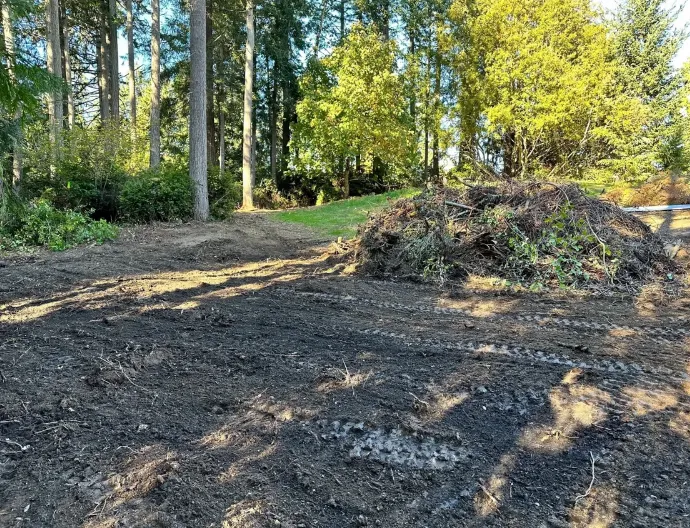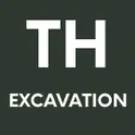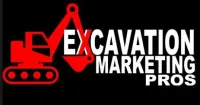Serving: Pierce, Kitsap, Mason and Thurston counties

Hidden Costs of DIY Land Clearing Near Tacoma | TH Excavation
If you're staring at a brush-covered lot, overgrown field, or wooded area near Tacoma, it's easy to get the itch to clear it yourself. Maybe you've got a chainsaw. Maybe a buddy offered to lend you their tractor. Maybe you just want to save a few bucks. We get it.
You're a homeowner who takes pride in doing things yourself. You’re not afraid to get your hands dirty. But somewhere between the first swing of the axe and the last load of debris, things tend to change. That "simple weekend project" turns into a full-blown headache. And suddenly, you're spending way more than you thought you were saving.
At TH Excavation, we’ve seen the aftermath of DIY land-clearing projects all across Kitsap, Pierce, Mason, and Thurston Counties. This isn’t to knock your effort — not at all. But we do want to help you understand what you’re getting into before you rent that equipment or call your cousin with a chainsaw.
Let’s talk about what DIY land clearing near Tacoma costs — in money, in time, and in risk.
1. Why So Many Tacoma Homeowners Try DIY Land Clearing
There’s a mindset here in Western Washington: if you can do it yourself, why not?
Land clearing sounds simple on the surface. Cut a few trees, pull out some stumps, pile it all up, and you’re done, right? For homeowners in places like South Hill, University Place, or Spanaway, where forested lots are common, it feels like the natural first step when improving your property.
We understand the appeal:
You want to save money
You want to control the project
You want it done on your timeline
That makes sense. But it’s also what causes people to overlook what this kind of work really involves.
2. What Looks Simple—Usually Isn’t: The Reality of Clearing Land Yourself
Clearing land isn’t just about chopping and hauling. It’s about making the land usable, safe, and compliant with local regulations. That means you’re not just dealing with brush and trees — you’re dealing with root systems, grading, drainage, erosion control, and sometimes even utility lines underground.
We’ve had clients call us halfway through a DIY job because:
Their rented skid steer got stuck in wet clay
They hit a buried irrigation line
Their chainsaw couldn’t get through an old-growth stump
They underestimated how much material would need hauling
Land here in Pierce County is unpredictable. What looks flat on the surface might be full of buried roots, hidden rocks, or groundwater just below grade.
3. The Financial Costs DIYers Don’t See Coming
Here’s where things start to get expensive.
You might think, “Renting a brush cutter and a dumpster will save me thousands.”
But let’s break it down:
Skid steer rental: ~$400–$600/day
Chainsaw and safety gear: $300–$800 if you’re buying
Dump trailer or hauling: $500–$1,500, depending on load size
Fuel & delivery fees: $200–$500
Permit fees (yep, some areas require them): $100–$300+
That doesn’t even include repairs if something breaks — and it often does. We’ve seen people spend upwards of $3,000 trying to DIY a ¼-acre clearing project, only to call us in when they ran out of time or tools.
4. Equipment Rental vs. Equipment Ownership: The Price Trap
Here’s another problem: rental equipment is not the same as owning or operating professional-grade gear.
Most rental equipment is limited in power and size, and you might not get the attachments you need. Worse, if you’re not used to handling it, you can burn through hours (and fuel) trying to do something a professional could finish in minutes.
And every extra day you keep that rental? More cost.
5. Disposal, Dump Fees, and Surprise Permits
This is the sneaky part.
Clearing the land is only half the job. Now you’ve got piles of branches, stumps, and dirt to get rid of.
In Pierce County:
Yard waste drop-off isn’t always free — many sites charge by the ton.
Burn bans are common, and even where burning is allowed, it’s heavily regulated.
Brush piles left too long can become fire hazards or homes for pests.
And depending on your location, you might need:
Clearing permits
Erosion control plans
Tree removal documentation (especially in sensitive areas)
Missing one of these can get you fined or stop your project altogether.
6. Injury, Liability, and the Risk of Doing It Alone
Here’s something no one likes to talk about: land clearing is dangerous.
Chainsaws kick. Trees fall the wrong way. Machines roll over. It happens.
If you're not trained, and something goes wrong:
You could get seriously injured
You could damage your property — or your neighbor’s
Your homeowner's insurance might not cover it
Even worse, if you hire a friend or a day laborer and they get hurt, you could be held liable if they’re not insured.
We’re not trying to scare you — just make sure you’re walking in with your eyes open.
7. How DIY Can Damage Your Land (and What That Means Long-Term)
Some things are fixable. Others leave lasting scars.
Improper clearing can lead to:
Soil compaction from heavy machines
Drainage problems from poor grading
Erosion if vegetation is stripped too aggressively
Root damage to the trees you wanted to keep
We’ve been called in to fix lots where the topsoil was ruined or where water now pools every time it rains. Those fixes? Often more expensive than doing it right the first time.
8. DIY vs. Hiring a Local Pro: What’s the Real Difference in Cost?
Let’s say your DIY project would cost around $3,000 (tools, rental, disposal, fuel, etc.).
A professional crew might charge $4,500 for the same job, but they bring:
The right equipment
A trained crew
Insurance and licensing
Clean-up and haul-away
Experience working on land just like yours
What you’re paying for is speed, safety, and peace of mind. And often, we can save you money by doing it more efficiently, with fewer mistakes, and no surprise costs halfway through.
9. When DIY Might Make Sense—and When It Doesn’t
We’ll be honest: not every project needs a pro.
If you’re clearing a few small bushes, or just removing some surface brush on a flat, dry lot? Go for it.
But if your project involves:
Trees with trunks larger than 6”
Sloped or wet terrain
Stumps, rocks, or roots
Erosion-prone areas
Hauling and disposal
You’ll probably save time, money, and sanity by hiring a pro.
10. How TH Excavation Helps Tacoma Property Owners Clear Smarter
At TH Excavation, we’ve helped homeowners across Tacoma, Puyallup, Gig Harbor, and beyond clear their land the right way — without surprises.
We’re not the biggest firm in Kitsap or Pierce County, but we’re focused on doing work that fits what you need. Every piece of land is different. Every budget is different. We work with both.
Whether you’re building a new home, making space for a barn, or just tired of the blackberry jungle behind your house, we can help you figure out the smartest way forward — even if that means we just point you in the right direction.
You don’t have to go it alone. And you don’t have to learn the hard way.
Final Thoughts
DIY land clearing might seem like the cheaper option near Tacoma — until it isn’t.
When you factor in equipment, disposal, safety, and mistakes, the real cost starts to add up fast. And in many cases, it costs more to fix a bad clearing job than to hire a professional from the start.
We’re here to help you clear your land with confidence, not regret.
Want to talk about a project you’ve got in mind? Reach out to TH Excavation. No pressure — just answers.

